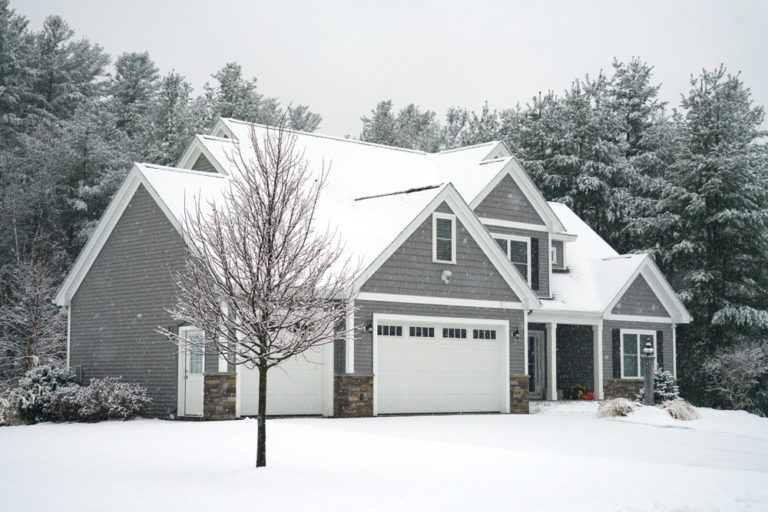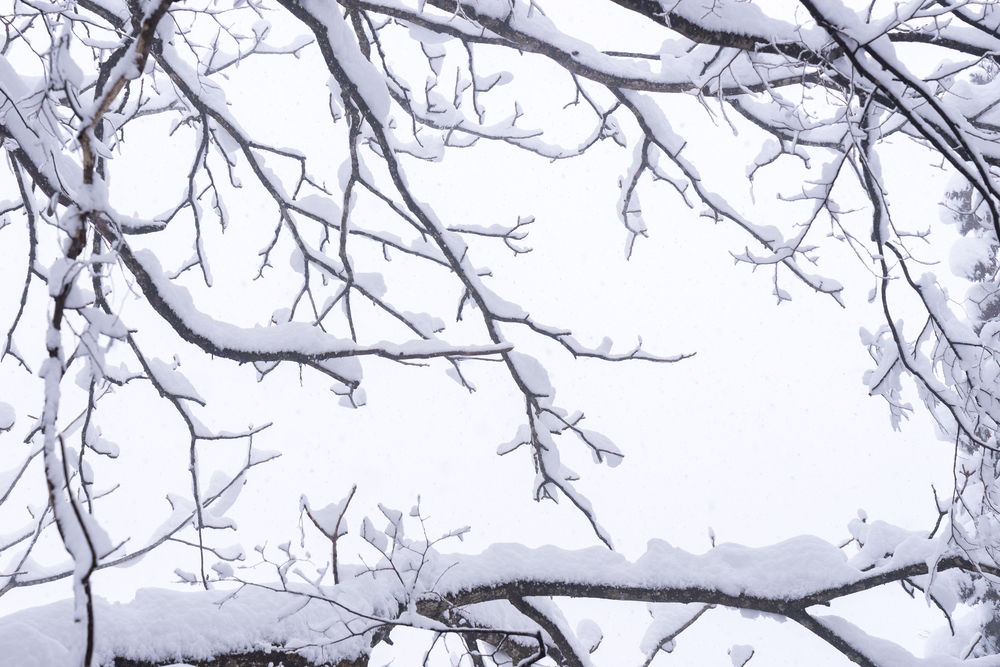
Canadian homes are built to withstand winter, but that does not mean that they are invincible to extreme cold and frosty weather.
It’s not only the dismally low temperatures that can cause damage to your home. As temperatures fluctuate, you may also end up facing some unsightly repairs.
Instead of going through the hassle of dealing with damage to your home during the wintertime, here are some things you should look out for to protect your Alberta home:
1. Frozen Pipes
When temperatures become extremely cold, your pipes may be at risk for freezing and bursting. The freezing water inside your pipes causes water molecules to expand, which causes a significant amount of pressure buildup between the ice blockage and your home’s faucets. This is what causes pipes to burst.
What to do: Insulate any exposed pipes with heat tape or foam pipe installation. You can also open cabinet doors under your sinks to allow warm air to circulate around your pipes.
2. Snow and Ice Strain on Your Roof
You can’t keep snow and ice from accumulating on top of your home. It’s something that happens every winter. Unfortunately, this can create icicles that can put stress on your roof structure and damage shingles. Strong winds during the wintertime can catch these loose shingles and pull them off of your roof.
What to do: Remove icicles immediately and fix damaged shingles as soon as you can.
3. Ice Dams in the Gutters
Ice dams occur when ice and snow build up in blocked gutters. This can cause undue weight on the gutters and create a risk of them disconnecting from your home.
Without properly working gutters, melting ice and snow can accumulate around the foundation of your home. This leads to flooding as well as damage to your home’s roof.
What to do: Clear your gutters of debris in the fall and clear any ice dams that do form by applying a de-icing product.
4. Cracking and Rotting Around Your Windows and Doors
During the winter, the frames around your windows and doors can become soft and damp, leading to wood rot.
Extreme cold can cause the caulking around your windows to pull away, creating drafts that allow cold air to enter your home and warm air to escape.
What to do: Fill damaged areas around your windows and doors with epoxy wood filler and reapply caulk to fill any cracks to prevent heat-loss.
5. Driveway and Deck Damage
Your deck and driveway are not immune to extreme cold damage. Shovelling can cause chips and scrapes to both these areas of your home’s exterior.
If you use de-icing products, the chemical compounds can break down and corrode driveway and deck materials.
What to do: Clear away snow and ice with a rubber-bladed or plastic shovel (avoid ones made of metal). If you do need to de-ice these areas, use products free of harsh chemicals, such as rock salt, to avoid permanent damage.
6. Heavy Snow on Tree Limbs

Extreme cold conditions can put undue stress on tree limbs by weighing them down with snow and ice. The combination of low temperatures and heavy condensation can cause tree limbs to break and fall on your roof, siding or power lines.
What to do: Prevent winter damage to your property’s trees by pruning them in the fall and clearing them of snow build-up in the winter. Also, remove any cracked limbs in the spring.
7. Basement Leaks
As temperatures fluctuate during the wintertime, melting ice and snow can make their way through cracks into your basement. Basement floods can cause significant damage to your home.
What to do: Make sure your sump pump is working properly and clear any drain clogs in and around your home.
8. Frozen Sump Pump
Sump pumps work by diverting water from the pump basin away from your home. Depending on your property, your pump may utilize an extension hose.
This hose can freeze and become clogged with ice. The result is water backing up into your home and causing flood damage.
What to do: Winterize your sump pump and remove the extension hose once temperatures drop below freezing.
9. Damage to Your Foundation
Every winter brings what is called the “frost heave cycle” where the ground freezes, melts and then freezes again.
This causes the soil around your home to shift and can, ultimately, move under your home’s foundation and cause cracks or other damage.
What to do: Ensure your property drains properly, repair any foundation cracks and waterproof your basement.
10. Damage to Your Home’s Siding
Fluctuating temperatures can do a number of your home’s vinyl siding. The material it is made of expands and contracts significantly during temperature changes.
Siding can become brittle and crack in cold temperatures. Should water seep into those cracks, it can cause structural damage to your home.
What to do: Keep an eye on your siding throughout the wintertime and fix up any cracks as you find them.
Will My Home Insurance Cover Weather Damage to My House?
Whether or not you can claim weather damage through your home insurance policy depends entirely upon the type of policy you have.
However, common weather damage is typically included in a homeowners insurance policy, including:
- Roof damage
- Water damage
- Wind damage
- Frozen pipes
- Fallen trees
- Ice dams
Flooding may be covered under your policy but most insurance companies do not cover flood damages to homes within basic premiums. Keep in mind as well that if your home is in a state of disrepair, and suffers from weather-related damage, your insurance policy may not cover the repairs.
Ultimately, it is best to speak with your insurance broker to find out exactly what kind of damages your policy will cover.
If you’re looking for more information on how to better protect your Alberta home, look no further than our expert brokers at Capital Insurance! Get in touch today and we’ll be happy to help you out.

